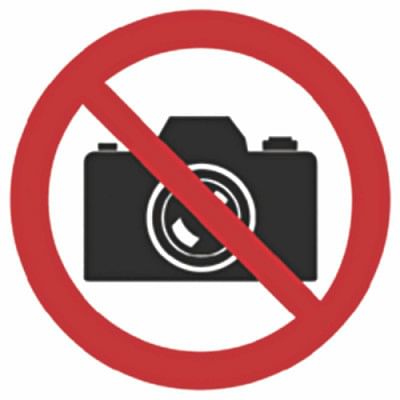No photograph policy of retailers

Shoppers of retail stores would have noticed that many of these stores insist on a policy of not taking photographs within the store. As claimed in some of their notices, such a policy may serve the need of protecting the security and privacy of the stores and other customers. Despite these potential merits, the policy seems to pose a few questions. Firstly, in an era, when businesses are quite keen on promoting their brands through advertisements, it would seem bizarre that they are adopting a policy which shuts an avenue of advertising at no cost. Even in the ongoing Dhaka International Trade Fair, some businesses are encouraging visitors to their stores to take selfies.
Of course, retail stores are private properties and they can set rules for their stores that they feel would serve their best interest and there can be some legitimate reasons for adopting a no photograph policy. A no photograph policy may have been somewhat dictated by the concern of copycat use by competitors. However, it seems rather unreasonable that mere photographs would give away so much information to competitors which they would not otherwise be able to obtain by employing alternative means such as using human beings to gather such information. And a business worrying about the very basic information that a photograph may capture would appear to be trying to protect something which is not protectable.
To assume that photographs by a customer would be harming the privacy of other customers seems to be unconvincing. Of course, retail stores are not a public place such as the playgrounds, parks, and streets etc. But a retail store is not a private place either where there may be a reasonable expectation of protection of privacy in the way people can expect the same in their homes or hotel rooms or beauty parlours. Again, for the possibility of preventing a few irresponsible customers from taking snaps in a way that may harm the privacy of other customers, an outright ban on the taking of snaps altogether does not seem to be proportionate or reasonable. Retailers need not be ultra-protective of their customers' privacy. In any case, any customer taking a photograph of another customer in an unlawful manner intruding on the privacy of the latter can be legally pursued by the latter and the retailer need not intervene in that case by a pre-emptive blanket ban. Another legitimate reason for retailers to adopt the no photograph policy may be to reduce the scope of casing the joint that is potential shoplifters checking out the stores to plan on what could be stolen. However, it would appear that close circuit television cameras installed inside the stores and the barcode scanners at their exit points should be able to take care of their concerns about shoplifting.
From another perspective, the regulators may have something to ponder about the merits and demerits of this policy adopted by some of the retailers. A no photograph policy can promote a culture of secrecy which would help some retailers to avoid or reduce unwanted (from their viewpoint) attention or scrutiny of their unlawful practices. By the banning of shooting photographs, retailers can reduce the scope of probing eyes of the customers. Such a possibility is not far-fetched but real. There are several offences punishable under the Consumers' Right Protection Act, 2009 (CRPA) which can be proven more easily if consumers can use photographs as evidence. For instance, under Section 37 of the CRPA, selling any product without the required packaging and without inscribing weight, amount, ingredients, instructions for use, maximum retail price, date of manufacture, date of packaging and date of expiry of that goods on the label is punishable when under any law, the sale or delivery in question is required to be done with such packaging and accompanying information. Similarly, violating any obligation imposed by any Act or Rule of displaying the price-list of goods by affixing it at a conspicuous place of a shop or organisation is an offence punishable under Section 38 of the CRPA. Selling or delivering any goods or service in a manner which is in violation of a promise made by concerned business is punishable under Section 45 of the Act. Thus, for instance, offering a good on discount and then taking the regular price would be an offence punishable under Section 45. In all of these three cases, it is not difficult to understand that photographs may potentially serve as evidence, in resolving a complaint before the Directorate of National Consumers' Right Protection or a court of law. Thus, it would be argued here that the regulators should assess whether or not the retailers and other business adopting the same policy would have a free reign regarding the policy of taking photographs within their stores. A legal intervention on this and the parameter of such intervention would require a scrutiny of the assessment of the retailers right to regulate their private property and the consumers right to greater freedom and transparency which is beyond the scope of this brief essay but a discussion on this may be desirable from the viewpoint of protection of the interests of consumers.
THE WRITER IS AN ASSOCIATE PROFESSOR AT SCHOOL OF LAW, BRAC UNIVERSITY.

 For all latest news, follow The Daily Star's Google News channel.
For all latest news, follow The Daily Star's Google News channel. 



Comments